How To Sand A Door With An Electric Sander
Base and intermediate sanding: Sanding off doors coated total-surface with h2o-based paint
Environmental effects and natural vesture cause the coating on house and room doors to lose its sheen or peel off over time. This guide shows you how to sand off doors and renovate old room doors so that they look like new. Sanding off doors is quick and clean with the right tool. These instructions do non cover how to re-glaze the finished issue.
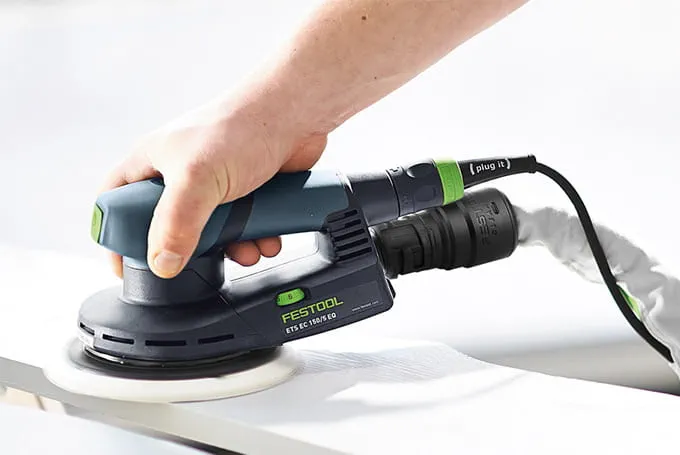
Description
Environmental and health awareness has grown substantially amid people in Germany over the last ii decades. Consumers are significantly more critical of the use of solvents when working with paints and varnishes than they were in the 1960s or 1970s. For this reason, the utilise of paints and varnishes that contain a high amount of solvents is no longer accepted in sensitive areas such as nurseries, schools and hospitals, equally well every bit in residential and office buildings.
Environmental and consumer protection is also an important goal of the European Community, and the European VOC directive (VOC = Volatile Organic Compounds) requires a significant reduction in the use of volatile solvents in paints and varnishes. This kind of far-reaching modify to the materials used also results in changes to the backdrop of paints and varnishes. This affects not only the application and resistance properties of the coatings, merely likewise the subsurface grooming required.
Due to their composition, systems that were previously conventionally used (due east.g. alkyd resin varnish) exhibit better filling properties than paints and varnishes with reduced or no solvent content. What this means for users is that finer annoying grain sizes must likewise be used for preparing surfaces for painting or varnishing (base sanding, filler sanding and intermediate sanding), every bit sanding marks tin become more or less visible in the final product depending on the gloss and color of the coating material. In add-on, mod h2o-based paint systems clog up abrasives more heavily than older solvent-based paint systems.
Festool has designed a new generation of abrasives specifically for these paints – Festool GRANAT, specially designed for VOC paint systems. These abrasives can exist used, for example, to renovate room doors or sand off door frames.
The post-obit guide describes how the user can maintain the familiar level of quality in the final product, using the instance of "Repairing and sanding off doors with water-based pigment".
Tools/accessories
The following tools and accessories are recommended for apply in this illustrated guide:
Alternative tools
The GRANAT Cyberspace abrasive tin also be used every bit an alternative.
Tip: A protection pad must be used when using an abrasive net.
Process
-
For applications such as sanding a door frame or refurbishing room doors, the following sanding steps must be followed (please also refer to the technical data canvas provided by your paint manufacturer):
- Sanding off the sometime paint from the wooden door (if required due to the coating/the status of the doors)
- Applying filler/primer to the surfaces
- Intermediate sanding of filler/undercoat
- Applying repair compounds (if required)
- Intermediate coating
- Intermediate sanding
- Final blanket
A cursory explanation of the individual points is provided below.
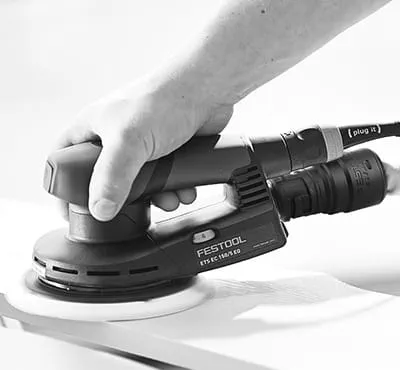
-
Sanding off onetime pigment from the room doors:
- Connect the ROTEX geared eccentric sander to a mobile dust extractor.
- Affix GRANAT P80 sandpaper (or coarser if required) to the sanding pad.
- Set up the ROTEX to coarse sanding (rotary motion).
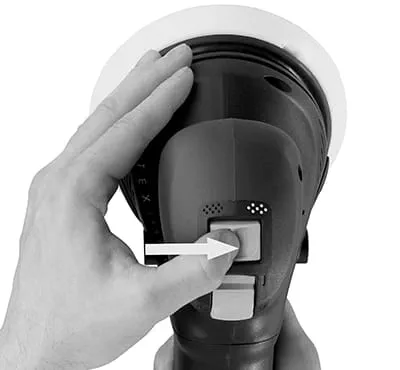
-
Switch on the tool and guide it evenly over the doors until the erstwhile paint layer has been sanded off.
Switch the tool to fine sanding and sand off the surface using GRANAT P120.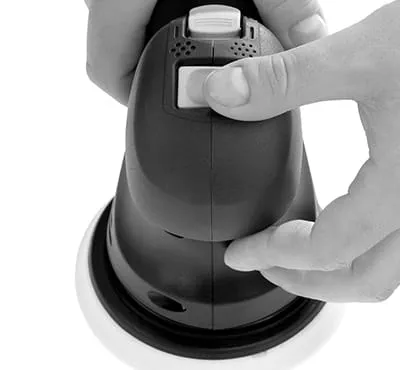
-
An orbital sander or linear sander is used in the rebate expanse of the doors.
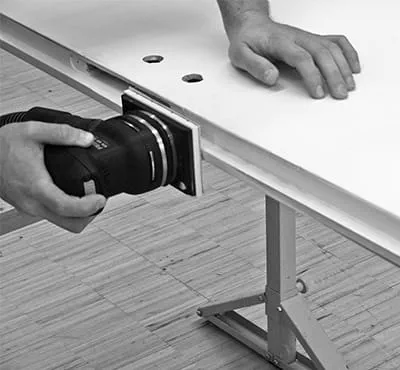
-
One time filler/undercoat has been applied to the surfaces in accordance with the technical data sheet provided past your paint manufacturer, the kickoff intermediate sanding required for renovating the front door takes place:
Intermediate sanding of the filler/undercoat:
- The adhesion properties of the last blanket and the smoothing away of spray, roller or castor patterns produced during the paint application process are both very important aspects of the intermediate sanding process for doors.
- Connect the eccentric sander to a mobile dust extractor.
- Affix GRANAT P240 abrasive paper to the sanding pad on the eccentric sander.
- Even distribution of the guide control blackness powder across the painted surface.
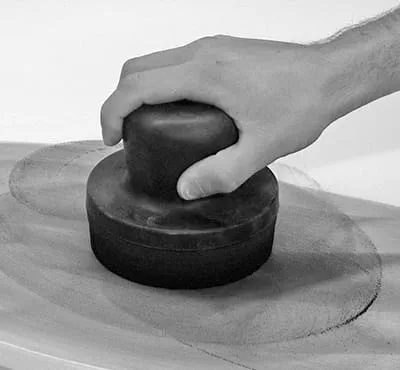
-
Once the guide control blackness pulverisation is no longer visible, sanding of the surface is consummate. Switch on the tool and guide it evenly over the surface until no more guide control black powder is visible.
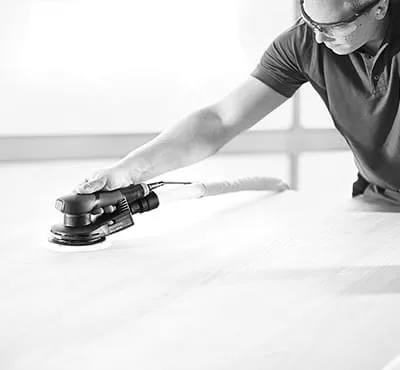
-
If the abrasive becomes chock-full during work, the speed of the tool is reduced. This clogging is caused as a upshot of the pigment heating up and sticking to the abrasive.
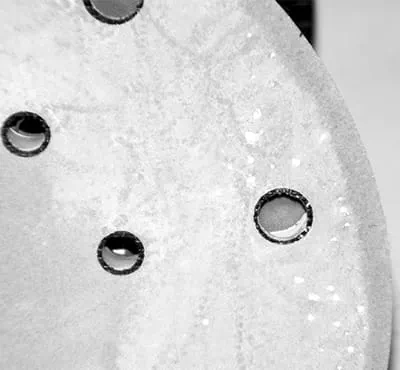
-
Deeper holes or points of damage (that cannot be levelled off without sanding through the filler) are filled with putty, stripped away and re-sanded in one case dry using the eccentric sander and GRANAT P240.
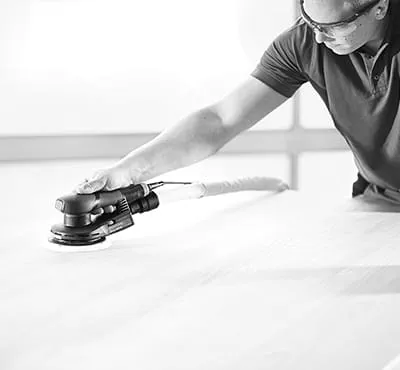
-
One time the intermediate coating has dried completely and can be sanded, carry out intermediate sanding:
Different methods are possible depending on the intended surface structure.
In the consequence of visible spray, roller or brush patterns (also known as orange pare), follow these steps:
- Connect the eccentric sander to a mobile dust extractor.
- Affix GRANAT P320 sandpaper to the sanding pad on the eccentric sander.
- Switch on the tool and guide it evenly over the doors until the spray, roller or castor patterns accept been levelled off.
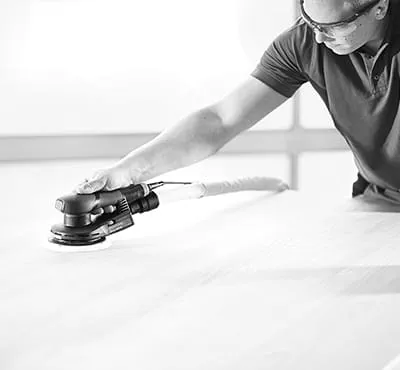
-
To prevent sanding through the top coat layer, it is necessary to optimise the application process by ways of the application technology and the paint setting then that patterns in the top coat that require levelling off during intermediate sanding are kept to a minimum.
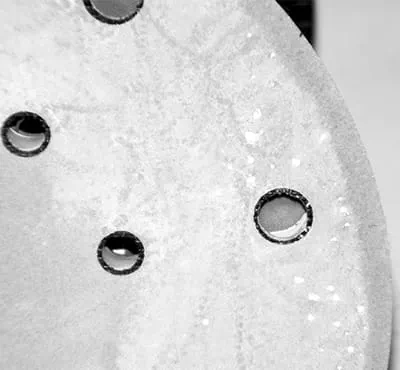
-
If the painted surfaces are compatible (no patterns), the doors can be processed in the following fashion when sanding:
- Connect the eccentric sander to a mobile dust extractor.
- Affix GRANAT P400 sandpaper to the sanding pad of the eccentric sander and sand the doors evenly without applying pressure.
- Sand the rebate areas evenly with the manual abrasive without using the tool.
- Once the dust has been removed from the surfaces, the terminal coating process tin can begin.
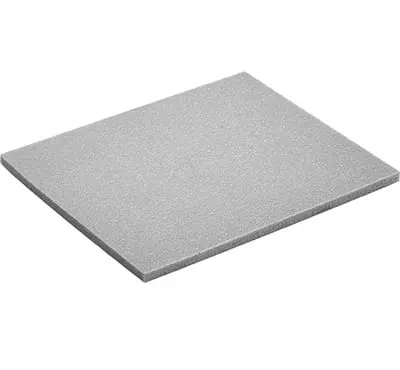
Source: https://www.festool.co.uk/knowledge/application-examples/sanding-off-doors











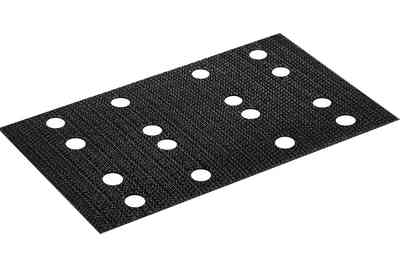

0 Response to "How To Sand A Door With An Electric Sander"
Post a Comment